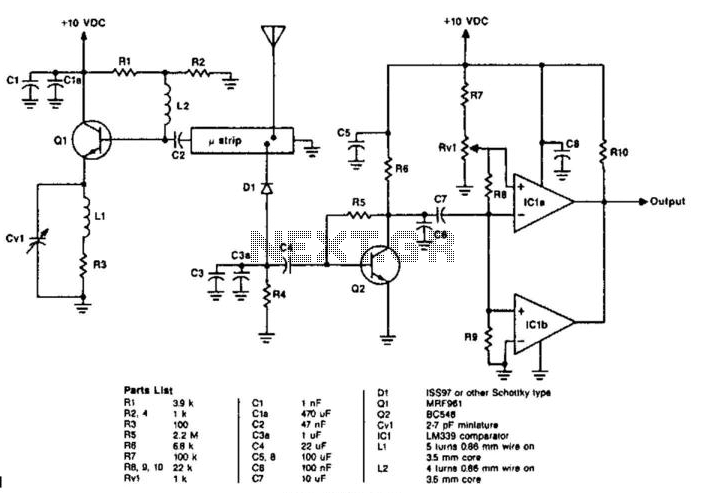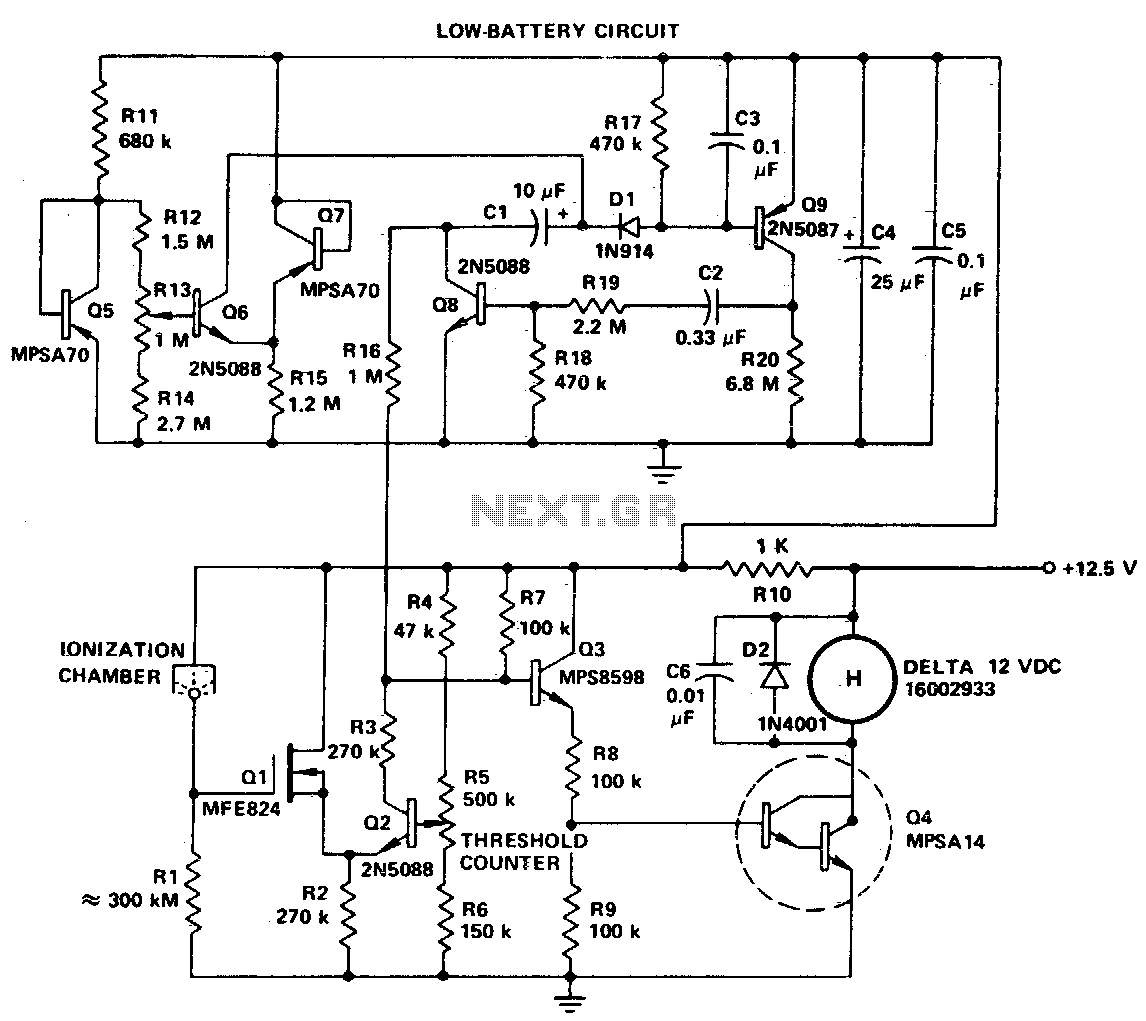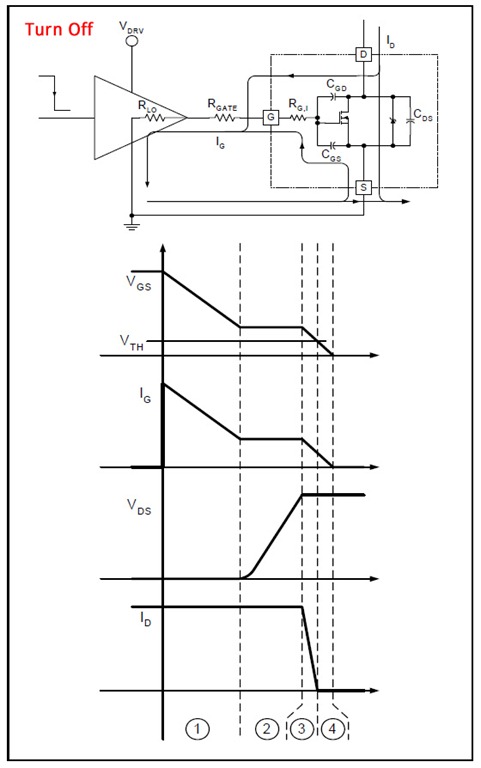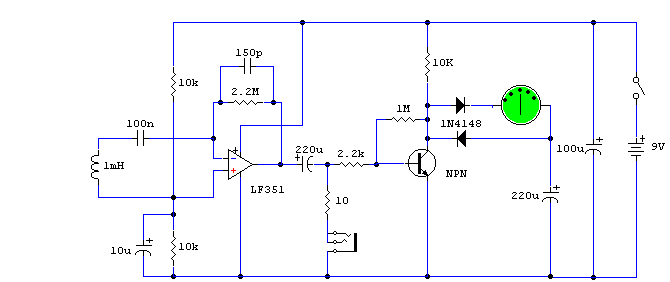
Uhf Motion Detector

The UHF motion detector operates on the Doppler radar principle. Q1 is an oscillator that creates a radiated signal. An object in the radiated field reflects some of this energy back to the detector. If the object is moving, the reflected signal will have a different frequency because of the Doppler shift. Q1 is an oscillator coupled to a small (8-cm) antenna. This antenna also receives the reflected signal. D1 acts as a mixer and produces a beat note of frequency that is equal to the difference in reflected and radiated signal. Q2 amplifies this signal and couples it to comparator/detector IC1A and IC1B. The output can continue on to an alarm, relay, lamp, etc.
The UHF motion detector employs the Doppler radar principle to detect motion within its operational range. The core component, Q1, functions as an oscillator generating a continuous wave signal that is transmitted through a compact antenna measuring 8 centimeters. This antenna is responsible for both emitting the radiated signal and receiving any reflections from objects within its detection field.
When a moving object enters the coverage area, it reflects a portion of the emitted signal back towards the detector. Due to the Doppler effect, the frequency of the reflected signal differs from that of the original radiated signal, depending on the relative velocity of the object. This frequency shift is critical for motion detection.
The reflected signal is processed by D1, which serves as a mixer. It combines the original radiated signal with the reflected signal to produce a beat frequency. This frequency is equal to the difference between the two signals and is essential for determining the presence and speed of the moving object.
Following this, Q2 amplifies the beat frequency signal, enhancing its strength for further processing. The amplified output is then fed into the comparator/detector integrated circuits IC1A and IC1B, which analyze the signal to determine if it exceeds a predefined threshold indicative of motion. Upon detecting motion, the system can trigger various output devices such as alarms, relays, or lamps, thereby providing a practical application of the motion detection capabilities of the circuit. This design effectively combines radio frequency technology with electronic processing to create an efficient motion detection system. The UHF motion detector operates on the Doppler radar principle. Ql is an oscillator that creates a radiated signal. An object in the radiated field reflects some of this energy back to the detector. If the object is moving, the reflected signal will have a different frequency because of Doppler shift. Ql is an oscillator coupled to a small (8-cm) antenna. This antenna also receives the reflected signal. Dl acts as a mixer and produces a beat note of frequency that is equal to the difference in reflected and radiated signal.
Q2 amplifies this signal and couples it to comparator/detector IC1A and IC1B. The output can continue on to an alarm, relay, lamp, etc.
The UHF motion detector employs the Doppler radar principle to detect motion within its operational range. The core component, Q1, functions as an oscillator generating a continuous wave signal that is transmitted through a compact antenna measuring 8 centimeters. This antenna is responsible for both emitting the radiated signal and receiving any reflections from objects within its detection field.
When a moving object enters the coverage area, it reflects a portion of the emitted signal back towards the detector. Due to the Doppler effect, the frequency of the reflected signal differs from that of the original radiated signal, depending on the relative velocity of the object. This frequency shift is critical for motion detection.
The reflected signal is processed by D1, which serves as a mixer. It combines the original radiated signal with the reflected signal to produce a beat frequency. This frequency is equal to the difference between the two signals and is essential for determining the presence and speed of the moving object.
Following this, Q2 amplifies the beat frequency signal, enhancing its strength for further processing. The amplified output is then fed into the comparator/detector integrated circuits IC1A and IC1B, which analyze the signal to determine if it exceeds a predefined threshold indicative of motion. Upon detecting motion, the system can trigger various output devices such as alarms, relays, or lamps, thereby providing a practical application of the motion detection capabilities of the circuit. This design effectively combines radio frequency technology with electronic processing to create an efficient motion detection system. The UHF motion detector operates on the Doppler radar principle. Ql is an oscillator that creates a radiated signal. An object in the radiated field reflects some of this energy back to the detector. If the object is moving, the reflected signal will have a different frequency because of Doppler shift. Ql is an oscillator coupled to a small (8-cm) antenna. This antenna also receives the reflected signal. Dl acts as a mixer and produces a beat note of frequency that is equal to the difference in reflected and radiated signal.
Q2 amplifies this signal and couples it to comparator/detector IC1A and IC1B. The output can continue on to an alarm, relay, lamp, etc.





